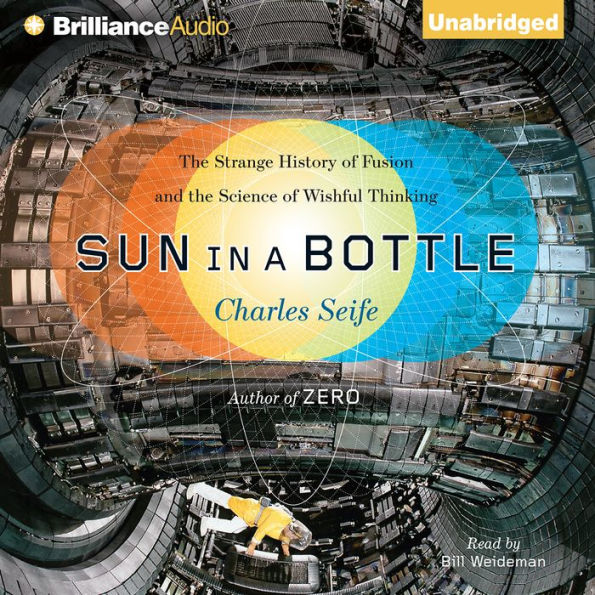Ann Finkbeiner
…substantive and lively …Seife writes with effortless clarity, taking readers through the complex physics and engineering. That means the reader can not only understand but, even better, evaluate Seife's message
—The New York Times
Publishers Weekly
Fifty years ago scientists and futurists glowingly predicted a future in which cars would run on little fusion cells and the world would extract deuterium from the oceans for an inexhaustible supply of energy. Like all too many shining visions, fusion turned out to be a mirage. Award-winning science journalist Seife (Zero) takes a long, hard look at nuclear fusion and the failure of one scheme after another to turn it into a sustainable energy source. Many readers will remember the 1989 "cold fusion" debacle, but Seife explains why tabletop fusion isn't all that difficult to achieve. The problem, as with all fusion devices except the hydrogen bomb, is to produce more energy than the fusion process consumes. The two most promising approaches today use plasma and lasers, but again, Seife reports, scientists have been repeatedly frustrated. The United States and several other industrial nations recently agreed optimistically to sink billions of dollars into a 30-year fusion power project. Seife's approachable book should interest everyone concerned about finding alternative energy sources. (Nov. 3)
Copyright © Reed Business Information, a division of Reed Elsevier Inc. All rights reserved.
The Washington Post
Written with clarity and infectious enthusiasm that are rare in science writing. . . . Zero is really something.
Kirkus Reviews
Science reporter Seife (Journalism/NYU; Decoding the Universe, 2007, etc.) clearly explains the power behind both the sun and the hydrogen bomb, hyped as a possible source of cheap energy despite 60 years of research that has produced little except headlines. The author begins with a history of nuclear fission and fusion, including a surprisingly comprehensible account of how they work. His lucid prose enables nonscientists to easily understand the operation of a hydrogen bomb or the means by which researchers hope to harness fusion to generate electricity. Fission occurs when large molecules (uranium, plutonium) split into smaller ones. In fusion, the opposite occurs: The smallest molecules (deuterium and tritium, forms of hydrogen) slam together to form larger ones, mostly helium. This generates far more energy than fission but happens only at a temperature of millions of degrees that would vaporize any container. As a result, researchers suspend hydrogen in mid-air using magnetic fields or lasers, then apply enormous energy to heat it. By the 1950s, fusion was occurring for a fraction of a second, but sustaining it has proved difficult. Larger and increasingly expensive devices have produced only modest improvements, and the world's hopes now lie in a titanic, internationally financed project based in France that will cost more than $10 billion and begin operation after 2016. Seife does not ignore the media circus that exploded in 1989 when several reputable researchers announced they had produced fusion in a laboratory at room temperature. When others couldn't reproduce their findings and it turned out they had fudged some data, most scientists grew skeptical, but there remains anenthusiastic movement, including a few scientists, convinced that the greedy "hot-fusion establishment" is suppressing a world-shaking discovery. A relentlessly entertaining tale of scientists pursuing a dazzling dream that, in the author's educated opinion, may never come true. Agent: Katinka Matson/Brockman, Inc.
APRIL 2009 - AudioFile
Nuclear weapons were invented and deployed to end the U.S. war with Japan, but Edward Teller began a series of studies after WWII to discover peaceful uses for atomic energy. Fusion—the energy of the sun—showed the most promise to Teller but proved elusive in propagation and containment. Using plasma, magnets, and lasers, many men searched for the secret they called cold fusion. Narrator Bill Weideman disarms the potential intimidation of this complex topic by making the ideas conversational. His scientific vocabulary never falters, and his ability to sound like a teacher describing the historical parts of discovery make one want to keep listening. Without any complicated formulas or structures, the story of the taming of hydrogen's energy adapts well to a spoken experience. J.A.H. © AudioFile 2009, Portland, Maine




